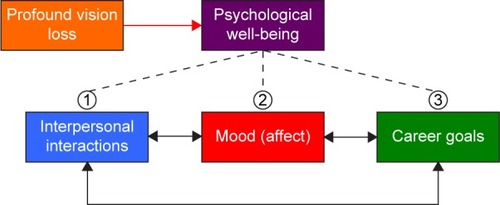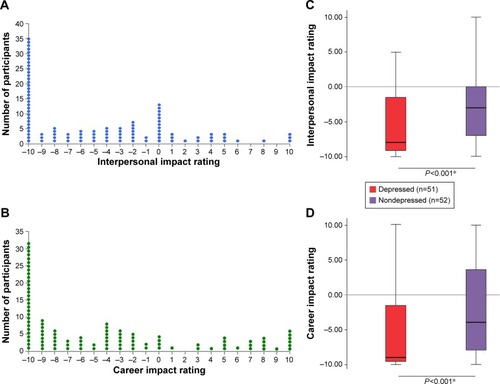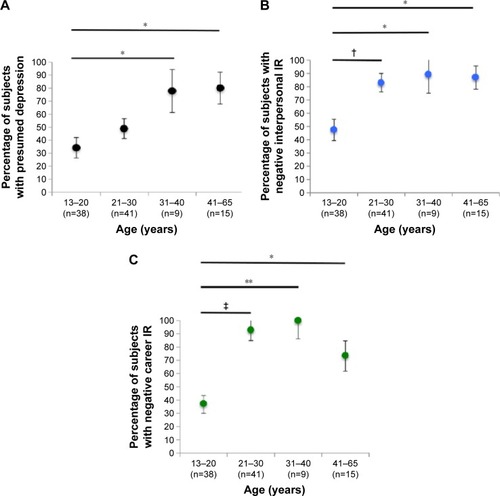Figures & data
Figure 1 Illustrative model depicting the components of and factors influencing psychological well-being.

Table 1 Participant demographic and clinical characteristics (N=103)
Figure 2 Interpersonal and career impact ratings.
Abbreviations: IQR, interquartile range; IR, impact rating; Q1, first quartile; Q3, third quartile.

Figure 3 Percentages of subjects with presumed depression (A), negative interpersonal IR (B), and negative career IR (C) distributed by age-group at the time of diagnosis of profound vision loss secondary to LHON (N=103).
Abbreviations: IR, impact rating; LHON, Leber’s hereditary optic neuropathy.

Figure 4 Low vision aids used among participants and impact of electronic low vision aids on social well-being index (N=103).
Abbreviations: CCTV, closed-circuit television; JAWS, Job Access With Speech.

